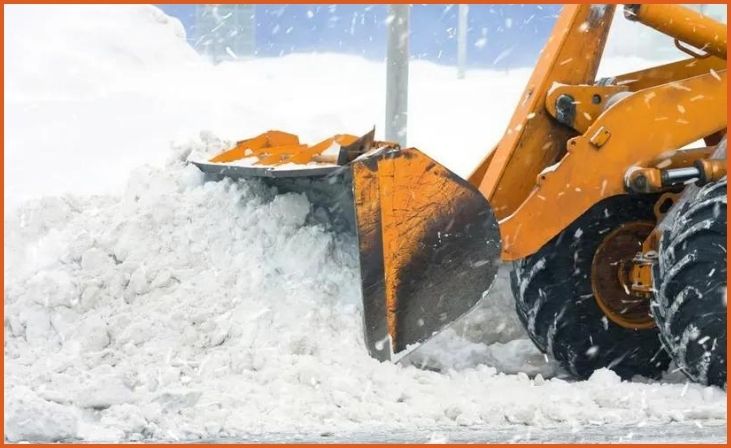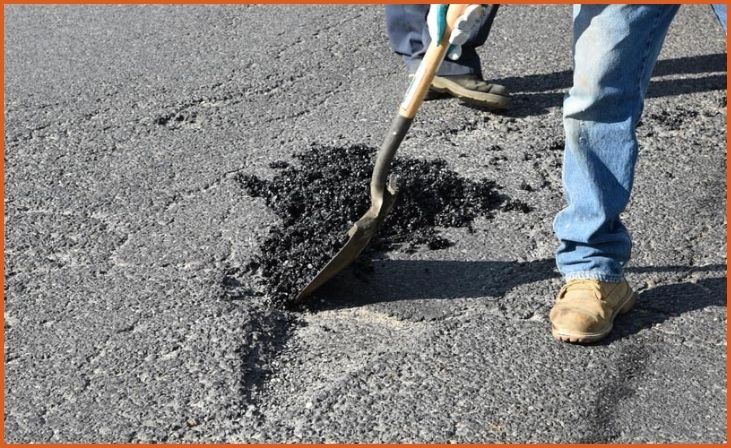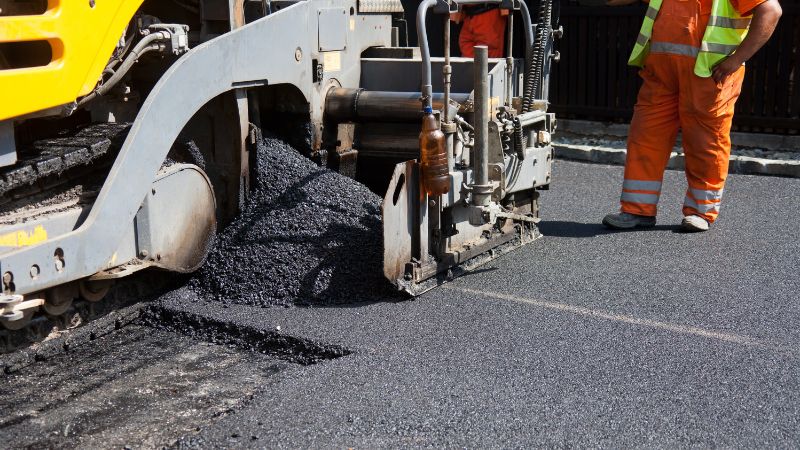Winter weather can be harsh on your driveway, leading to damage and costly repairs. To ensure your driveway remains in top shape throughout the cold months, it’s crucial to adopt preventive measures. Snow, ice, and fluctuating temperatures can cause cracks and deterioration if not properly managed. By following these eight essential tips, you can protect your driveway from winter’s wrath and extend its lifespan. From proper snow removal techniques to using the right sealants, these strategies will help safeguard your investment and maintain the curb appeal of your home.
8 Tips To Protect Your Driveway In Winter
1. Regular Snow Removal

To prevent damage to your driveway during winter, it’s essential to remove snow promptly. Snow accumulation can lead to ice formation, which might cause cracks and potholes. Use a plastic or rubber snow shovel to gently clear snow from the surface. Metal shovels can scratch or damage the driveway, particularly if it’s made of asphalt or concrete. Consider investing in a snow blower for larger driveways to speed up the process. Avoid using metal plows or shovels as they can scrape and erode the surface. Additionally, clear the driveway regularly, especially after heavy snowfall, to prevent ice from forming underneath the snow.
2. Apply De-Icers Carefully
De-icers can help prevent ice buildup on your driveway, but it’s important to use them correctly to avoid damaging the surface. Sodium chloride (rock salt) is commonly used, but it can be harsh on concrete and asphalt, leading to surface degradation over time. Opt for more gentle alternatives like calcium chloride or magnesium chloride, which are less damaging to the driveway material. Spread de-icers evenly and sparingly to minimize potential harm. Always follow the manufacturer’s instructions to avoid overuse, which can result in excess chemical runoff that might harm surrounding vegetation or damage the driveway itself.
3. Seal Your Driveway
Sealing your driveway is a proactive measure to protect it from winter’s harsh conditions. A good sealant acts as a barrier against moisture infiltration, which can lead to cracks and surface damage. For asphalt driveways, apply a sealant every 1-2 years, ideally before the onset of winter. This helps to prevent water from seeping into tiny cracks and freezing, which can expand and cause further damage. For concrete driveways, choose a sealant designed for concrete surfaces and reapply as recommended by the product instructions. Proper sealing helps to maintain the driveway’s durability and extend its lifespan.
Read Also: Tips For Quality Asphalt Pavements
4. Fill Cracks and Potholes

Before winter arrives, inspect your driveway for cracks and potholes and address them promptly. Small cracks can quickly widen with freeze-thaw cycles, leading to more significant damage. Use a crack filler or patching compound suitable for your driveway material to fill in these gaps. For asphalt driveways, a cold-patch asphalt mix works well, while concrete driveways require a concrete crack filler. Make sure the surface is clean and dry before applying the filler, and follow the product instructions for the best results. Repairing cracks and potholes before winter can prevent water from seeping in and causing further damage.
5. Avoid Using Metal Shovels
When clearing snow and ice, it’s important to use the right tools to avoid damaging your driveway. Metal shovels can scratch and chip the surface, especially if it’s made of asphalt or concrete. Opt for plastic or rubber shovels instead, which are less likely to cause damage while still effectively removing snow. If you use a snow blower, make sure it is set to a height that avoids direct contact with the driveway surface. This practice will help prevent unnecessary wear and tear and maintain the driveway’s condition throughout the winter season.
6. Use a Driveway Heating System
For a more advanced approach to driveway maintenance, consider installing a driveway heating system. These systems can be electric or hydronic and are designed to melt snow and ice automatically. Electric heating cables can be embedded in the driveway surface during installation or retrofit into an existing driveway. Hydronic systems use heated fluids circulated through pipes to achieve the same effect. While the initial investment is higher, these systems can significantly reduce the need for manual snow removal and de-icing, providing a more convenient solution for maintaining a clear, safe driveway.
7. Ensure Proper Drainage

Good drainage is crucial for preventing water from pooling on your driveway, which can lead to ice formation and damage. Ensure that the surface of your driveway is graded properly so that water flows away from it rather than collecting on it. Check for any low spots or areas where water might accumulate and address them by adding or adjusting the slope. Proper drainage helps to prevent ice patches and minimizes the risk of water infiltrating cracks and expanding when frozen. Maintaining adequate drainage is an essential step in protecting your driveway during the winter months.
8. Inspect and Maintain Your Driveway Regularly
Regular inspection and maintenance are key to keeping your driveway in good condition throughout the winter. Periodically check for signs of damage, such as cracks, potholes, or surface deterioration, and address any issues promptly. After severe winter weather, inspect your driveway for any new damage that may have occurred. Conduct routine maintenance tasks such as clearing debris, filling cracks, and applying sealants as needed. By staying proactive with inspections and maintenance, you can catch and address minor issues before they become major problems, ensuring your driveway remains in optimal condition through the winter season.
Read Also: Benefits Of Commercial Asphalt Paving
Conclusion
Protecting your driveway during winter is vital to prevent damage and avoid expensive repairs. Implementing these eight tips will help you maintain its condition and longevity. A lot may change with regular maintenance, the correct way to remove snow, and the correct safety precautions. By taking proactive steps now, you can ensure your driveway remains durable and attractive, regardless of the harsh winter conditions. Stay ahead of potential issues and enjoy a well-preserved driveway for years to come.
FAQs
What is the best way to remove snow from my driveway?
Use a plastic or rubber snow shovel to avoid scratching the surface. Avoid metal shovels and be gentle to prevent damage.
How often should I seal my driveway to protect it in winter?
Seal your driveway every 1-2 years, ideally before winter, to protect it from moisture and freeze-thaw damage.



